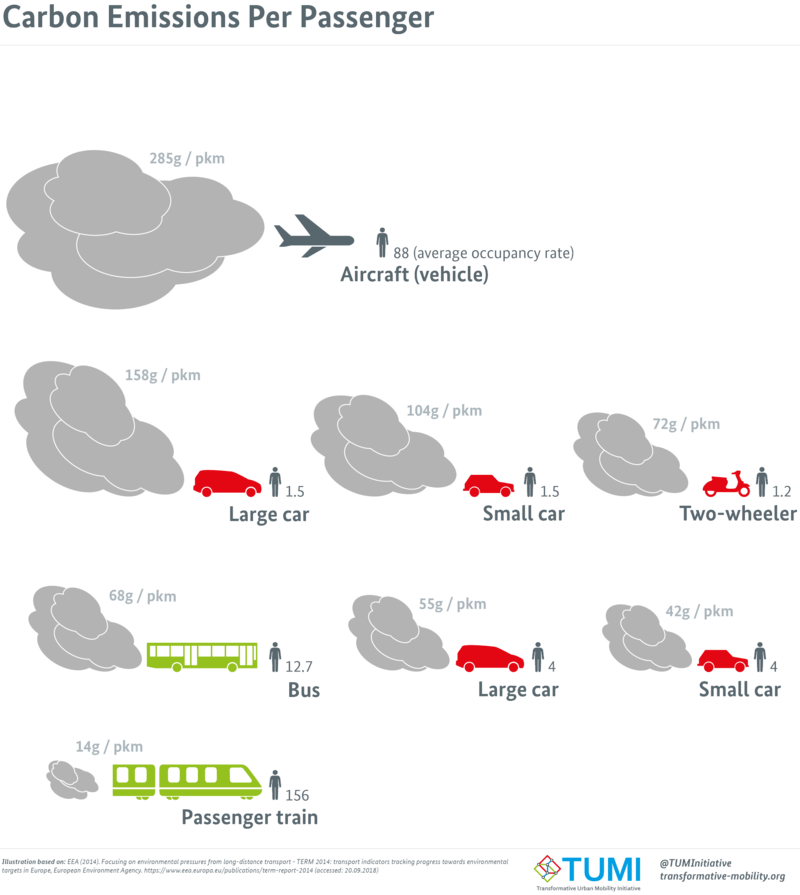
The European Union (EU) likes to think of itself as a leader in global climate action. It has made substantial progress in decarbonising electricity generation, but this is only the first, relatively “easy” task to be followed by the more difficult problems of heating, industry, and transportation. Transportation is especially concerning as the economies of member states and their labour forces are heavily reliant on the European car industry. The process of decarbonisation is driving a shift from the internal combustion engine (ICE) to an electric vehicle-dominated (EVs) fleet—an important step in the green transition. But electric vehicles pose their own set of challenges. Producing EVs is less labour-intensive and runs the risk of leaving many without jobs, especially when combined with the on-going process of automation.
Central and Eastern Europe (CEE) will be deeply affected by the shift from ICE propelled drivetrains to EVs, as the region is an “assembly hall” for Western automotive companies. This key step in the “green transition” has been the focus of the EUKI-backed Just Transition in the European Car Industry project, of which I am a part. We conducted around three dozen interviews and organised a conference to better understand developments in the automotive industries of Croatia, Czechia, Germany, Hungary, and Slovakia between 2020–2022. Our findings suggest that the solely positive image trumpeted by car manufactures of the transition towards an electric vehicle industry is actually much more complex, as the region is subject to fierce geoeconomic competition to the detriment of labour.
The CEE car industry is now around a century-old. Several legendary companies were launched in these countries during the early 20th century, such as Škoda in Czechoslovakia, Rába in Hungary, and Fabryka Samochodów Osobowych (FSO) in Poland. These firms propelled industrialisation and employed people by the thousands by designing and manufacturing their own vehicles. These companies survived the collapse of state socialism but their roles shifted dramatically as local original equipment manufacturers (OEMs) were uncompetitive on global markets. Each company was faced with one of three fates: becoming a small-time part-supplier for other, larger car manufacturers; maintaining their brand name but having the company itself sold out and cannibalized by Western companies; or simply being dissolved by their government.
Newly post-socialist CEE countries quickly became reliant on Western technology and capital after the automotive sector was restructured. Major OEMs, like Audi, Daimler, Jaguar, and Volkswagen, to name a few, established a strong presence in the region, bringing economic development through industrialization to rural areas. Western firms came to employ a substantial portion of the labour force after the regime change, currently providing 5% of all jobs in Slovakia, 4.8% in Czechia, 3.5% in Hungary, and a “mere” 1.8% in Poland. These numbers are substantially above the EU-27 average (1.7%) and most of them surpass even Germany’s figures (3.0%), long famed for its automotive industry.
The shift to electric drivetrains is disrupting the status quo in the automotive sector, by prompting immense competition between companies and their respective states. US Tesla and the Chinese “Big Four” (SAIC Motor, Dongfeng, FAW, and Chang’an) were first-movers and after establishing a strong presence in their domestic markets, have moved on to tackling foreign markets. German firms – key investors in the CEE region – were slow movers towards EVs and only recently began to alter their portfolios. Historically, their executives focused on fine-tuning diesel propulsion and developing auxiliary technologies that would reduce emissions (e.g. catalytic converters). With more ambitious climate targets, such incremental change came to seem insufficient, prompting the need for a technological shift that foreign companies were already pursuing.
Now European car companies are reorienting their vehicle portfolios, driven by a combination of consumer demand and policy. Luxury brands are in a better position to adapt because the higher costs of new technology only make up a smaller portion of their vehicles’ prices. In contrast, producers of inexpensive cars face challenges in meeting new emission standards while maintaining the relatively low prices of their vehicles. Such divergent economic factors will have different effects on the countries that host these companies as certain companies are faced with greater challenges in the electric vehicle transition.
Labour is another aspect where economic conditions diverge. Labour demand for EV production can be lower in general, but factories that produce for premium brands are better positioned to maintain or even grow sales which limits job loss. Consider Hungary, where the bulk of manufacturing is provided by Audi, Mercedes Benz, Stellantis (a conglomerate that includes Opel, Fiat, Chrysler, Peugeot, and Citroën), and Suzuki, with BMW also establishing a plant in forthcoming years. Of these, Stellantis and Suzuki are the only players that have no clear strategy for moving to EV production, while the others have already started down that path and are all competitive producers of luxury cars. It seems likely that these premium brands will persevere in the cut-throat competition unfolding with foreign competitors. In contrast, it remains unclear how the car industry will survive in Italy, where production is dominated by Stellantis (mostly Fiat).
While most car companies are adapting to the green transition, labour markets in CEE are generally tight and less flexible. Western Europe has drained the region’s labour force during the past decade as people seek out better blue collar and white collar jobs in places like London and Munich. In parallel, production has expanded in CEE, further tightening the labour market. Employers in CEE are now seeking employees far and wide, not only looking to attract labour within the 20–40 kilometer radius of facilities, as had been the case a decade ago, but hundreds of kilometers, even across national borders. This has helped foster a delicate chain of migration across Europe. As Hungarian people fill jobs in Germany and the UK, Ukrainians and Asian migrant workers have been brought in to bolster the weakened Hungarian and Polish labour market—a transition brought on by capital despite xenophobic government rhetoric in CEE itself. Most experts in the automotive sector expect this “manageable tightness” to be sustainable through at least the 2020s, assuming that electric and hydrocarbon-based drivetrains are produced in parallel. That is, the parallel production of electric and internal combustion engine vehicles are set to maintain employment levels in the region in the foreseeable future.
Labour has not necessarily been able to turn market tightness to its advantage, as is often the case. Unions in CEE have certainly grown, bolstered by successful strikes that have led to wage increases and better labour regulations, but they are struggling against the current in the region, which lacks an institutional tradition that allocates a strong role to unions. This, in part, is due to the legacy of “state capitalism,” in which unions were not supported by the state as it was the state’s role to represent the interest of workers, even if this was not necessarily true in practice. The collapse of state socialism further atomised workers and disempowered unions. Though German unions, such as IG Metall, have supported unionisation and unions in CEE, companies and governments continue to resist such pressure and push for lax labour laws and measures that impede workers’ obstruction of production.
Such limited resources and capabilities of unions also impede their ability to develop forward-looking strategies, mired as they are in the bitter struggles of the day-to-day. Moreover, most decisions related to regulation take place over their heads between companies and governments, limiting their access to information and their ability to play a constructive role in the energy transition. The automotive sector’s path forward remains poorly understood amongst union members, as many workers we spoke to were still very sceptical about whether EVs were really going to become the dominant form of the industry. They cited a host of problems ranging from the environment to the affordability, but they did not seem to be aware of long-term company objectives that are unequivocally in favour of EVs and the global market forces that are driving technological change towards them.
The ability of unions to act is, however, limited by states’ and companies’ ability to take action in a fraught web of geoeconomics. German companies compete with Chinese and US counterparts for market share, while Czechia, Hungary, Poland, Romania, and Slovakia compete against each other to attract investment. Thus, not only do unions have a limited ability to shape their future, but states themselves are forced into an international zero sum competition. Seemingly all governments can do is subjugate their industrial policies to the whims of capital or risk unemployment. Labour, typically even further marginalised, can then react to those decisions, but its limited power and insufficient organisation restricts its ability to affect change.
Governments have tried to cut through this Gordian Knot by moving up the value chain and capture high-value-added activities, but this future largely remains hypothetical. OEMs have maintained their most complex activities at home and, despite CEE countries’ governments prioritising research, development, and innovation (R&D&I), only a handful of success stories have materialised (consider the battery management technology of Rimac in Croatia). Thus, the region’s automotive industry is by-and-large on track to remain bound to relatively low added value processes.
A newly found industrial role for CEE is battery manufacturing, responding to the needs of automotive manufacturers. Hungary has been a leader in this respect, positioning itself to become a battery hub of the region. A flood of investment from South Korea and China enabled this new sector to emerge in the course of only a few years, leading to the development of megaprojects that are energy-, water-, and labour-intensive, resources of which the region has little surplus. Nonetheless, intense competition is unfolding between countries in the region, with the Hungarian government capturing the largest project to date with Chinese Contemporary Amperex Technology’s (CATL) €7 billion investment in a battery manufacturing plant. Other countries in the region have also taken steps to grow the sector by developing strategies, attracting foreign direct investment, as well as supporting domestic firms involved in respective supply-chains. Support is prevalent throughout the value chain, as Czechia, for instance, has launched new mining projects that will provide the lithium for the industry. A new rush is unfolding to capture lithium-ion markets in the region, which the IEA expects to grow a sizeable four-to-eight-fold through 2030.
The future path of the CEE automotive sector seems to be largely forged by foreign capital. Decisions are imposed by OEMs that have to manoeuvre a complex geoeconomic web of relations and competition. States’ scope of action is confined, but with some room to re-position themselves. Their actions have largely followed the new demands of capital that tends to support the highly individualised modes of transportation that underpin continued capital accumulation. In the process labour has been marginalised. It urgently needs to organise both within the CEE nation states and by supporting cross-border cooperation in pursuit of long-term sustainable objectives.

John Szabó is Fellow at the Institute for World Economics, Centre for Economic and Regional Science as well as an Assistant Lecturer at the Department of International and European Studies, Faculty of Social Sciences, Eötvös Loránd University.
